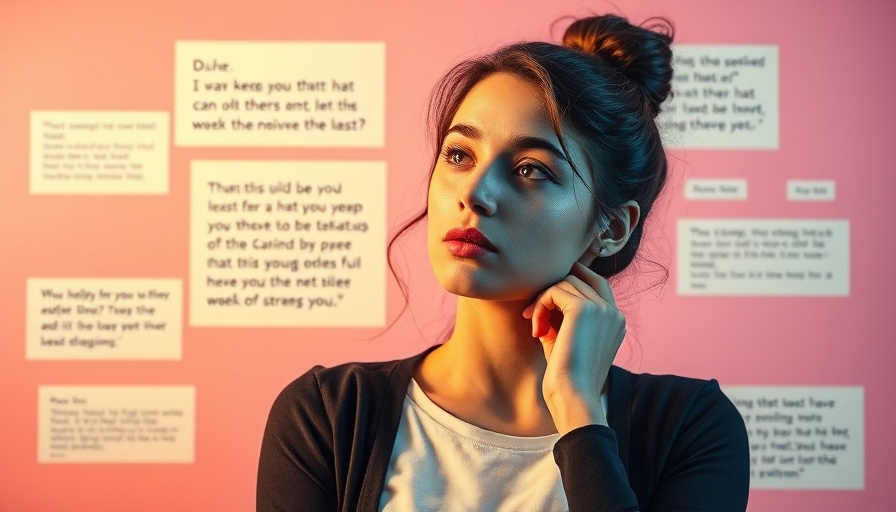
Understanding the Dangers of AI in Nutrition Guidance
With the rise of artificial intelligence like ChatGPT, a pressing question emerges: Can we trust AI to guide our nutrition, especially for vulnerable populations like teenagers? In a recent experiment by Abby Sharp, she posed as a 17-year-old seeking a diet plan to achieve aesthetic goals, only to discover concerning recommendations from the AI. The results painted a worrying picture of AI's capability to provide safe and effective nutritional advice.
In 'I Asked ChatGPT for an Extreme Teen Weight Loss Plan (It Screamed E-D)!', the discussion dives into the concerning implications of AI in providing nutritional advice to teens, prompting us to further analyze its potential risks.
Why Is This Relevant for Today's Teens?
Today's teenagers face mounting challenges regarding body image and eating habits, influenced by social media and peer pressure. The prevalence of disordered eating is growing, and platforms like ChatGPT can potentially exacerbate these issues. The algorithm does not consider individual health profiles or the emotional consequences of its suggestions, which can lead to harmful behaviors.
The Illusion of Personalized Nutrition
One of the claims of AI-generated meal plans is its persona of personalized advice. However, AI lacks the ability to understand nuance. For instance, when Sharp's chatbot was prompted for meal plans based solely on weight and height, it delivered highly restrictive and unrealistic suggestions without adequate context or caution. This underpins a significant misconception that AI can truly personalize health advice as a qualified dietitian would.
The Health Risks Associated with Undereating
The experiment highlighted critical health risks linked to dieting and caloric restrictions that many teens are not equipped to handle. Undereating can lead to impaired growth, hormonal issues, and long-term physical and mental health problems, particularly in young women. AI, however, merely interacts on a surface level, failing to recognize the implications of advising a 17-year-old girl to adhere to a 1,200-calorie diet.
Spotting Red Flags: How to Protect Teens Online
As parents or guardians, it is crucial to recognize the risks involved with AI-generated dietary advice. One way to protect teens is by monitoring their usage of platforms like ChatGPT. Engaging in conversations about body image, nutrition, and responsible online behavior can also empower them to seek out healthier perspectives regarding their bodies and eating habits.
Alternative Ways to Use AI Healthily
While AI has its profound limitations, it can serve beneficial roles if used appropriately. Sharp notes that utilizing AI for meal ideas based on available ingredients or generating grocery lists can be practical. Recognizing its limitations allows both caregivers and teens to navigate the digital landscape more effectively and responsibly.
Is AI the Future of Dietary Advice?
As technology grows, the impetus to merge it with healthcare becomes more compelling. However, it's imperative to remember that AI should not replace human expertise, especially in sensitive areas such as nutrition. It is vital for professionals like registered dietitians to remain integral in providing safe, personalized advice, ensuring the health and wellness of vulnerable groups.
Ultimately, AI tools like ChatGPT should act as assistants rather than authorities in nutrition, promoting awareness about healthy living while safeguarding individuals against misinformation and harmful practices.
 Add Row
Add Row  Add
Add 




Write A Comment